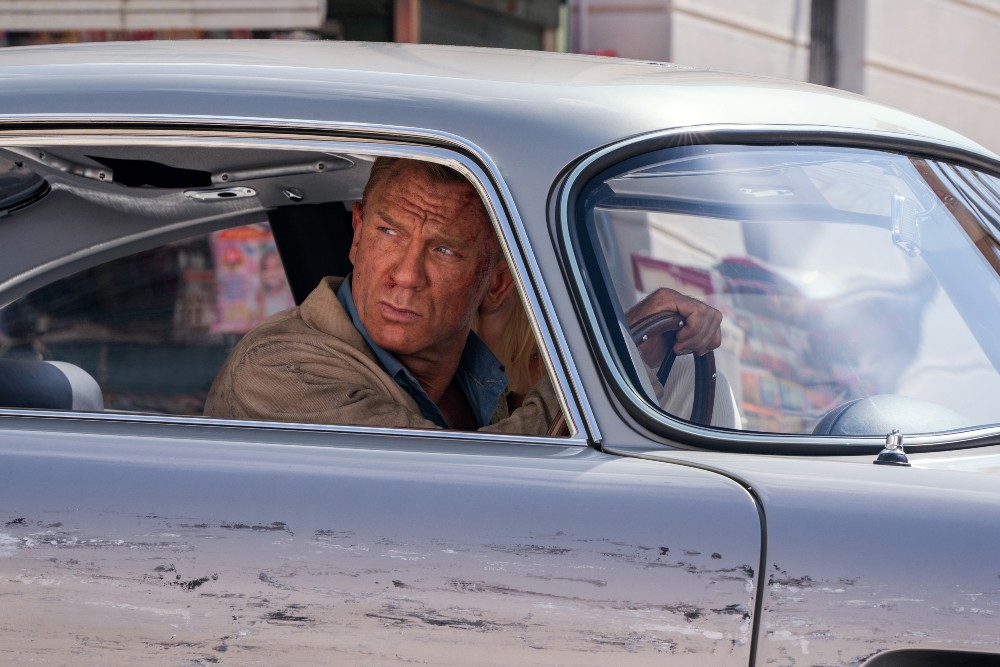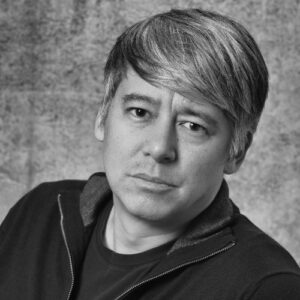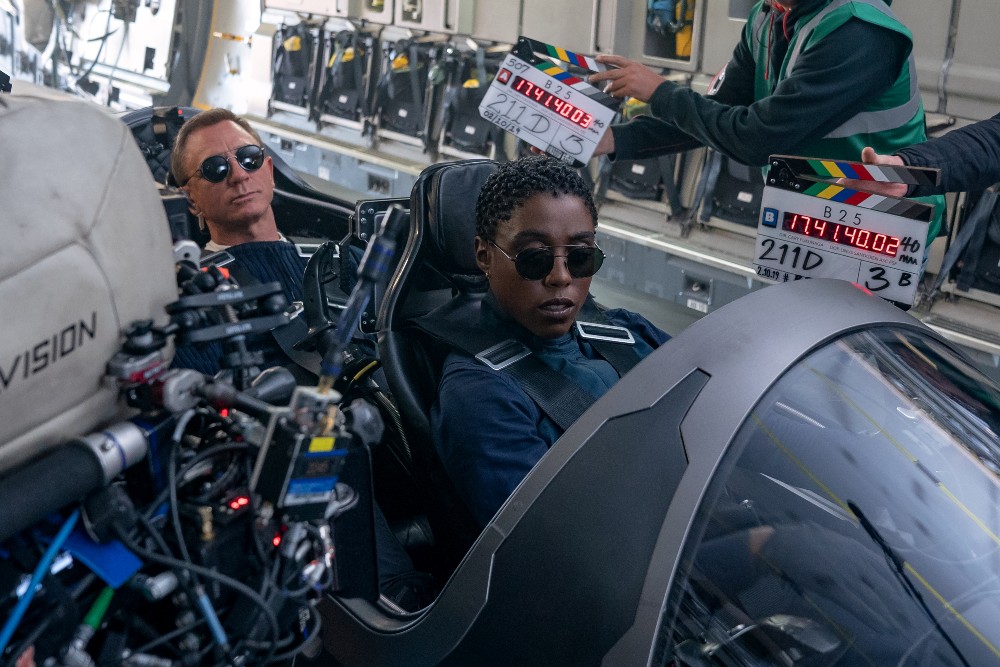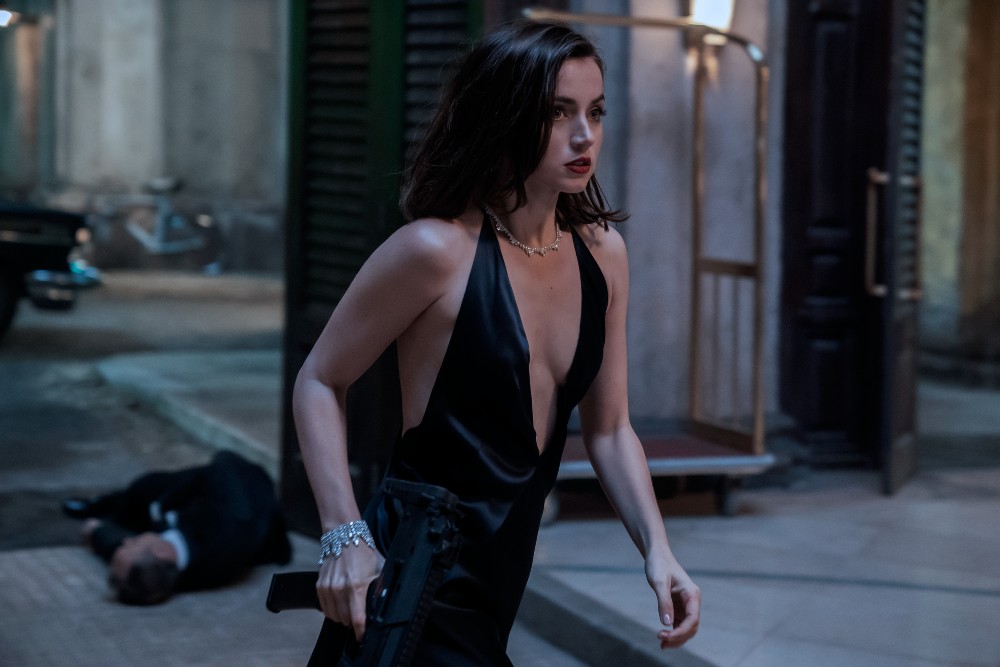
Theater attendance around the world has surged since the opening of the fifth and final James Bond film, No Time to Die. Produced by Michael G. Wilson, p.g.a., and Barbara Broccoli, p.g.a., directed by Cary Joji Fukunaga, and starring Daniel Craig, the movie finds Bond confronting his past while battling a conspiracy that threatens the world.
Elliot Graham, ACE, and Tom Cross, ACE, shared editing duties on No Time to Die. The production stretched out over several months, with locations in Norway, Italy, and the Caribbean. The editors were often on-site, for example, working in the wine cellar of a Matera hotel for a sequence in which Bond and Madeleine Swann (played by Léa Seydoux) are chased through the medieval town.
Elliot Graham has worked in commercials, television, and film, earning an Oscar nomination for Milk. He was nominated for an ACE Eddie award for Molly’s Game, directed by Aaron Sorkin. He first collaborated with Fukunaga on a 2009 for the Levi’s commercial, America. Graham is currently working as Additional Editor on The Grey Man, directed by the Joe and Anthony Russo.
Tom Cross began his editing career in commercials before transitioning to independent films. He edited Damien Chazelle’s short Whiplash, the basis for the feature film. Cross won an Oscar and a BAFTA award for the Whiplash feature, and has collaborated with Chazelle on La La Land, First Man, and Babylon, currently in production.
The two spoke with Below the Line via Zoom.

Below the Line: How and when did you get started on the production?
Tom Cross: Elliot was going to do the picture when Danny Boyle was the director, so he was getting script updates until Danny dropped out and Cary was announced. These things are such big endeavors that Michael, Barbara and Cary always knew you would want to have two editors working on this. And thank goodness for that.
Elliot Graham: At first I was going to be on my own, but I’m glad I ended up with Tom.
BTL: How do you work together? Do you split up material beforehand?
Graham: That was a conversation we had early on, let’s just pass ideas around and give each other notes and take them. Work on ideas together. Be a team. In practice, it’s really whoever is available as it came along. Whoever was the least busy would take the stuff.
On the other hand, we both wanted to have a certain amount of action, a certain amount drama. It was just being fair to each other. We did give each other feedback. Watching the movie now, viewers don’t know what Tom did or what Elliot did.
Cross: Very quickly, we found that aesthetically, our tastes were like 99.9% aligned. We had similar takes on things. It was amazing to be able to run scenes, run rough cuts by each other, and get feedback. Stylistically we kind of matched. Like Elliot said, we both did a little bit of everything. Action, drama, performance, you name it.
BTL: How much material were you working with?
Cross: I can’t speak to how many hours of footage we got. I will say that Cary is very deliberate in his shooting. He tries to be very specific. For a movie of this size and scope, he does not shoot an enormous amount of coverage, that is to say, he doesn’t overshoot.
Graham: It’s not Paul Greengrass-style coverage. I love Paul Greengrass, but what Tom’s saying is correct. Except with the second and third units, then it starts to pile up.
Cross: That’s sort of the nature of the beast. A Bond-size movie where you have multiple units shooting, you will get an enormous amount of footage coming in. But when Cary gets on set with Linus Sandgren, the cinematographer, and they work out how they’re going to tell the story cinematically, he tries to be fairly conservative. So, I would say while we got an enormous amount of footage, it wasn’t as much as you might think for a movie of this size.
Graham: I’d like to say something about Cary. He’s one of the filmmakers who is a true stylist, like a Ridley Scott or a Christopher Nolan. For his entire career, Cary is going to push the limits of what you can do with a camera, whether it’s IMAX or what have you.

BTL: How did you approach the Matera sequence? There were so many angles to cover, so many stunts to show.
Graham: We tore through Matera. It was all shot about the same time we went down there. Tom and I were cutting in the wine cellar of a hotel.
Cross: We set up our Avids in the basement of a hotel in downtown Matera.
Graham: We talked with Cary about the sequence as it was shot. So to a certain extent we moved pretty quickly.
Cross: In some cases, there were multiple cameras, things like the motorcycle jump that’s in the trailers. Probably four or five cameras on that, in a bunch of formats. But again, Cary was very specific, he knew what he wanted to get. He wanted choices and options in the editing room, but not too many. He didn’t want to overshoot it.
Graham: The car zooming around in circles, that may have had the most coverage. Still, you knew what was happening in that sequence. We probably spent more time on the opening [In Norway] than all of Matera.
BTL: So you are editing as they are shooting?
Cross: We’re not literally on the set, but Cary wanted us to be nearby. We would bring him rough cuts on a laptop, try to help in any way we could.
Graham: We were there to offer multiple cuts. When you see various versions, we can suggest pieces that might be missing or answer questions. You know, Daniel hurt his ankle, so there were multiple sequences that had to be shot over a course of months, piece by piece, with different actors available at different times. Part of our job was to work with the unit and with Cary to figure out what shots would be needed to connect things.

BTL: Is it difficult to cut without seeing what the effects will look like?
Graham: No, it’s fun. Weirdly, I started out in action and had to fight to get into drama. Whereas Tom started in drama, although frankly Whiplash is an action film as far as I’m concerned. It’s kinetic energy.
I might early on envision fireballs and metal flying around, that’s part of the creative process. You can use sound and music to imagine. You have conversations with the visual effects supervisors. That’s the fun of making a movie for me.
BTL: How does working in IMAX affect your editing?
Graham: For me, zero.
Cross: I mean, we always kept the big screen in mind, but it really affects how Cary and Linus shot it. That in turn affects how we cut it. So with certain wide shots, Linus and Cary shot them with particular intentions. So everyone gets affected, that format sort of trickles down.
Graham: I’ll argue with myself. You take into account holding on tight a little bit longer. You don’t want the giant thing on the screen that’s too fast. We get these questions about cutting differently for action, drama, IMAX. To me, the central thing is story, motion, character. Aesthetic energy. So okay, on IMAX perhaps you don’t want that quite as fast. That’s it for me.
BTL: The IMAX in No Time to Time is so immersive, you want to be in the shot forever. You never want to leave that moment.
Cross: You know Linus worked on IMAX with Damien on First Man. Cary and Michael Wilson and Barbara Broccoli were very committed to that format. They wanted a Bond movie for the big screen, for a theatrical experience. That meant going big screen from the beginning.
Barbara made sure that they reshot the gun barrel with Daniel Craig in IMAX, it was not recycled from previous movies. Martin Corbett, our first assistant editor, told us when they were going to be shooting that. We made sure to go to the stage because we wanted to meet [Main Titles Designer] Danny Kleinman, and we also wanted to witness Daniel’s final gun barrel. We walk onto the stage, and there’s a big IMAX camera, and then Daniel Craig in a tuxedo runs in and does four or five takes.
Graham: It was a surreal moment.
Cross: History was made.

BTL: Can you talk about the action sequence in Cuba with Daniel Craig and Ana de Armas? It’s not full-on, they actually stop to share a drink at one point.
Graham: You’re right, it does start and stop a bit. That was supposed to be a oner, one take, but by the time Tom and I came on it had several pieces, in part so you could follow it more easily. Also, Daniel throws himself into every take, there are no half efforts with him. There was some apprehension about doing a twenty-minute take. So we broke it into pieces in terms of how much he would have to give per second.
Then he got injured before it was actually shot. That meant it had to be shot in several parts. His at one time, Ana de Armas another, the bad guys still another time. Then all of them together for a few days.
It was a bit complex to figure out. We worked with the stunt group with what we had already, what was pre-vized, what shots might be connected, what we would have to wing as Daniel wouldn’t be there. It was a bit tricky, but from the start the drink was a specific thing. Did it stop too much? Or was it fun? I think it’s a bit hyperreal.
Cross: It’s definitely hyperreal. A pronounced pause. We talked about it, but I know Elliot and I were on the same page about it. Cary was on the same page, too. It gave a little character moment within this very propulsive action sequence. All of a sudden, you let the audience in on this moment between Ana and Daniel. You want to feel those characters. That whole sequence speaks to the virtuosity of the characters, that they can take the time to do this.
Elliot Graham: He then has fun jumping over the bar with his gun. There’s a lot of swagger, Hans Zimmer’s music kicks in. I think maybe one of the best Bond moments because it goes to this, “Hey, I got this. I’ll have a drink with that music, then I’m going to walk out and take over the scene.” Which he does. So stopping actually gives him an opportunity for one of his more badass moments.
BTL: Did you have any concerns about how long the movie would be?
Cross: We always knew that there was a lot of story that needed to be told. That was something Elliot and I both talked about. It was a big challenge to tell the entire story. Finishing Daniel’s emotional arc was the most important thing of all.
Graham: The most important thing to us and to Barbara and everyone else.
Cross: But how do we do it in a way that keeps the audience engaged, keeps the propulsive feeling?
At the same time, Cary and Michael and Barbara envisioned this epic Bond movie. It had to tie up Daniel’s story, but it also had to be bigger than we had seen before. Bond movies are always large in scope. The production design, the photography, the locations, this had all of that. But on top of that, it was also epic in time. We have three different time periods in the movie. That’s part of what the vision for the movie was, and we had to honor that.
Cary and Michael and Barbara gave us license to be operatic, to craft an epic movie. We knew it was going to be weighty, and we knew it was going to be of a certain length. The trick for us was how can we honor that, but at the same time, keep the pacing? How do we keep the action moving? So there was definitely stuff that hit the cutting room floor. Usually it wasn’t in the form of big, big scenes. It was more trims and things to make each scene as efficient as possible.
BTL: What kind of input did Michael Wilson and Barbara Broccoli have?
Cross: Their contribution can’t be understated. I mean, they’re very protective of James Bond as a character. I think to them, he’s like another family member. They have complete creative control of the franchise, yet both of us found Michael and Barbara to be very approachable.
Graham: Some of the best people I think we’ve met, and that’s really unique. How do you keep something like Bond at such a high level and be so giving? I think that they are incredibly protective, not by holding onto it, but by giving freedom to artists to take it in new directions.
Cross: They were enormously relaxed, considering how big the movie was and how important it was to the franchise. They were incredibly at ease. They always had faith in Cary’s direction. Like Elliot said, they were protective, but never micromanaged.
Graham: Only supportive. Only supportive.
No Time to Die is now playing in theaters across the country and globe. Look for more interviews from the movie’s below-the-line craftspeople (including DoP Linus Sandgren and 2nd Unit Director Alexander Witt) very soon.
All photos courtesy Eon Productions and MGM Pictures.





